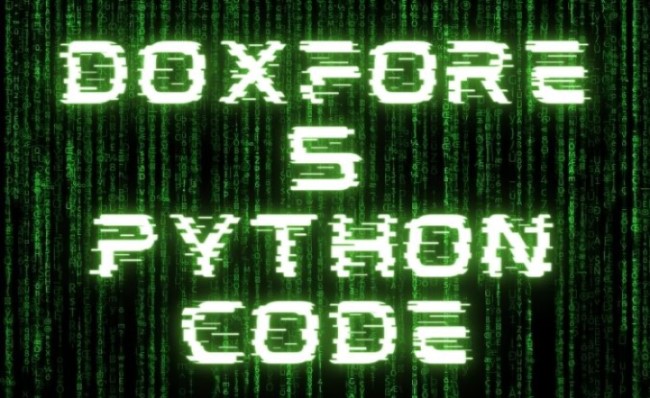In today’s data-driven world, the ability to efficiently analyze and interpret text data is more critical than ever. Enter Doxfore5 Python Code, a powerful tool designed to streamline complex text analysis tasks and provide insightful, actionable results. This comprehensive guide will help you master Doxfore5, ensuring you can leverage its full potential for your data analysis needs.
What is Doxfore5 Python Code?
Doxfore5 Python Code is a cutting-edge library that simplifies text processing, analysis, and visualization. It offers a range of functionalities from basic data handling to advanced natural language processing (NLP) tasks, making it an indispensable tool for data scientists, analysts, and developers.
Why Choose Doxfore5?
Doxfore5 stands out due to its user-friendly interface, robust performance, and versatility. Whether you are a beginner or an expert, Doxfore5’s intuitive design ensures you can start analyzing text data with minimal effort. It integrates seamlessly with machine learning models and offers comprehensive support for sentiment analysis, named entity recognition, and data visualization.
Getting Started with Doxfore5 Python Code
Installation
To begin using Doxfore5, you first need to install the library. This can be done easily using pip:
pip install doxfore5
Once installed, you can import Doxfore5 into your Python scripts:
import doxfore5
Loading Data
Doxfore5 simplifies the process of loading and handling data. For instance, to load a dataset from a CSV file, you can use:
data = doxfore5.load_data('path/to/your/datafile.csv')
print(data.head())
This command loads the data and displays the first few rows, giving you a quick overview of your dataset.
Core Functionalities of Doxfore5 Python Code
Text Processing
Text processing is a crucial step in text analysis. Doxfore5 provides tools for tokenization, stop word removal, and stemming.
Tokenization
Tokenization breaks text into smaller units, or tokens, for easier analysis.
text = "This is a sample sentence for tokenization."
tokens = doxfore5.tokenize(text)
print(tokens)
Stop Word Removal
Removing common stop words like “and”, “the”, and “is” helps focus on meaningful content.
filtered_text = doxfore5.remove_stopwords(tokens)
print(filtered_text)
Stemming
Stemming reduces words to their root form, ensuring consistency in analysis.
stemmed_text = doxfore5.stem(filtered_text)
print(stemmed_text)
Sentiment Analysis
Understanding the sentiment behind text data is vital for various applications, from customer feedback analysis to social media monitoring.
text = "I absolutely love the new features of Doxfore5!"
sentiment = doxfore5.analyze_sentiment(text)
print(sentiment)
This command analyzes the sentiment of the text, providing insights into whether the sentiment is positive, negative, or neutral.
Named Entity Recognition (NER)
NER identifies and classifies entities like names, organizations, and locations within text.
text = "Google is headquartered in Mountain View."
entities = doxfore5.ner(text)
print(entities)
Data Visualization
Visualizing data helps in better understanding and presenting analysis results. Doxfore5 offers powerful visualization tools.
doxfore5.plot_data(data, x='column1', y='column2', kind='scatter')
This command generates a scatter plot, making it easier to identify patterns and relationships in the data.
Machine Learning Integration
Doxfore5 seamlessly integrates with machine learning models, simplifying tasks like model training and prediction.
Training a Model
model = doxfore5.train_model(data, target='target_column')
Making Predictions
predictions = model.predict(new_data)
print(predictions)
These commands train a machine learning model on your dataset and use it to make predictions on new data.
Advanced Features of Doxfore5 Python Code
Custom Algorithms
Doxfore5 allows the implementation of custom algorithms, providing flexibility to meet specific needs.
sorted_data = doxfore5.custom_sort(data, algorithm='my_custom_algorithm')
print(sorted_data)
Topic Modeling
Topic modeling identifies and categorizes the main themes within large datasets, essential for trend analysis and content categorization.
topics = doxfore5.topic_model(data)
print(topics)
Best Practices for Using Doxfore5
Code Readability
Ensure your code is readable by using clear variable names and adding comments where necessary.
# Load the dataset
data = doxfore5.load_data('path/to/your/datafile.csv')
# Analyze the dataset to get summary statistics
summary = doxfore5.analyze_data(data)
# Print the summary statistics
print(summary)
Error Handling
Implement robust error handling to manage exceptions during data processing.
try:
data = doxfore5.load_data('path/to/your/datafile.csv')
except FileNotFoundError:
print("The specified file was not found.")
except doxfore5.DataLoadError as e:
print(f"An error occurred while loading data: {e}")
Performance Optimization
Optimize performance by profiling your code and identifying bottlenecks.
import time
start_time = time.time()
data = doxfore5.load_data('path/to/your/datafile.csv')
end_time = time.time()
print(f"Data loading took {end_time - start_time} seconds")
Stay Updated
Keep updated with the latest versions of Doxfore5 to leverage new features and improvements. Regularly check the documentation and release notes.
Real-World Applications of Doxfore5
Healthcare
In healthcare, Doxfore5 can analyze patient feedback, predict disease outbreaks, and optimize hospital operations.
Finance
In finance, Doxfore5 analyzes market trends, assesses risks, and automates trading strategies.
Education
In education, Doxfore5 analyzes student performance data, tailors personalized learning plans, and predicts student success.
Environmental Science
In environmental science, Doxfore5 models climate change scenarios, analyzes ecological data, and assists in resource management.
Conclusion
Doxfore5 Python Code is a powerful tool that enhances text analysis capabilities, offering a range of functionalities from basic data handling to advanced machine learning integration. By mastering Doxfore5, you can streamline your data analysis tasks, gain deeper insights, and make more informed decisions. Whether you are working in healthcare, finance, education, or any other field, Doxfore5 provides the tools you need to unlock the full potential of your data.

